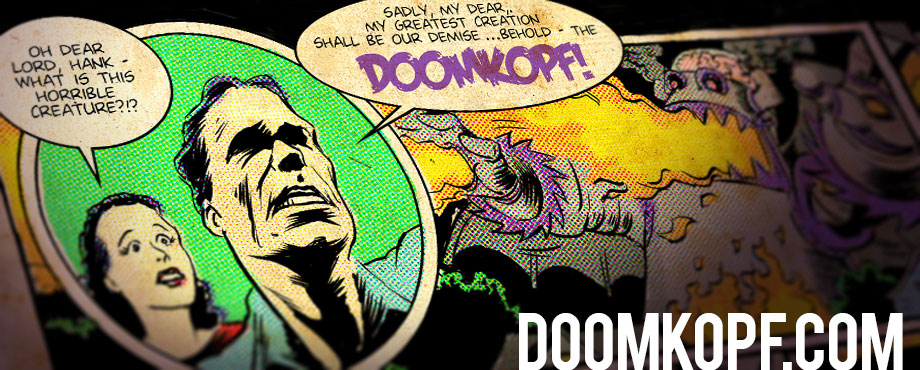Prince of Persia
By A.B. Sina (W)
and LeUyen Pham & Alex Puvilland (A)
Created by Jordan Mechner
Published by First Second, 2008; 190 pages; $16.95
 Prince of Persia is a graphic novel inspired by the era, setting and general mythology of the video game series of the same name, though not directly starring or attempting to personify any characters from said games. It’s just an attempt to tap into that same world and the same sensations that inspired the original characters and adventures.
Prince of Persia is a graphic novel inspired by the era, setting and general mythology of the video game series of the same name, though not directly starring or attempting to personify any characters from said games. It’s just an attempt to tap into that same world and the same sensations that inspired the original characters and adventures.
The story follows two parallel narratives — the triangle of a weak ruler, his bride and her brother; and a girl and exiled orphan who live in the resulting kingdom several hundred years later. One prince attempts to atone for the sins of another as various relationships intertwine, empires rise and fall and a whole lot of heads are lost. With prophecies and settings like palaces, ruins and secret tunnels, it’s fairly effortless to get swept up in a world that is very easy on the imagination.
The art is beautiful — scratchy, bold brush strokes and a palette rooted firmly in oranges and purples create an expressive, fantastic world that is far more violent and adult than the almost Disney-esque characters would suggest. The effect is not unlike Michael Avon Oeming’s work on Powers — the effect is magnified when gruesome things happen to “cute” characters. But at the same time, the art is abstracted enough to allow the reader to fill in plenty of the details, whether it’s the gore or the scenery.
My one criticism of the book was apparently a deliberate choice by the creators. Early on, it was tough to tell which characters were which and the sequence of what was happening, as the jumps back and forth between eras are never explicitly identified. The effect works very well once you catch on and you see how the unfolding stories complement each other, but there’s enough ambiguity at first that it definitely confused me for a while.
The various reality-defying moments stopped the flow of the story a few times in order to figure out what was going on, but Jordan Mechner explains in the afterword that writer A.B. Sina said “…the characters’ conflicts and relationships tend to be with the structure of reality itself, the structure of consciousness, rather than with individual psychological issues as we tend to focus on in the West.”
 Reconsidered from that context, I actually appreciated the story more as a single non-linear struggle that happened to have a few linear pieces. The whole thing works as several forces struggling toward the same goal, but rather than one happening a few centuries after the other, they’re progressing simultaneously — just a few hundred years apart.
Reconsidered from that context, I actually appreciated the story more as a single non-linear struggle that happened to have a few linear pieces. The whole thing works as several forces struggling toward the same goal, but rather than one happening a few centuries after the other, they’re progressing simultaneously — just a few hundred years apart.
I don’t know if that makes much sense, but what the creators sacrificed in the “moment-to-moment” reading experience was at least partially regained in the “sit back and think about what I just read” experience. That said, I could totally understand some people feeling like the trade-off isn’t worth it. There are some parts that just don’t make a lot of sense, and even though I consider myself a fan of the book there were times where I wasn’t sure if I was missing something or if the creators just left it up to the interpretation of reality-defying moments. Either way, the moments of confusion are still greatly outnumbered by the pages of what is still a compelling adventure.
The presentation is also worth noting. This book is put together to be appreciated on a bookshelf instead of filed in a comic box. The stock and pressing of the cover, the weight of the paper and the vibrancy of the printing all give the book a very prestigious feel — moreso than your typical graphic novel or trade paperback.
The Grade: B+
Though I enjoyed how the story played out, it was probably more challenging than it had to be. I think that will just come down to the readers’ preferences, which is hard to grade for. Most of it is straightforward enough that it can still be easily appreciated by someone for whom the time jumps are more annoying than intriguing.
The story was surprisingly violent, as I expected it to be a little more kid-friendly. I’d put the rating around PG-13. The violence was always justifiable for what the story demanded but still a little more intense (think decapitations and live organ removal) than what I expected from a book with Disneyesque visuals that was inspired by an all-ages video game. It was an unpleasant time for the characters to live, and that sense of despair was a necessary component for the struggle of people trying to overcome it.
